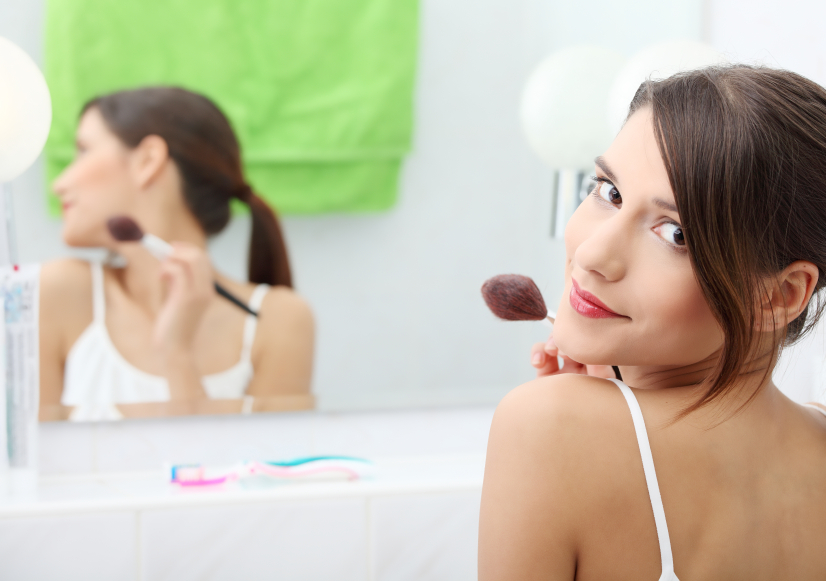Home Lighting
By Susan Bloom

Every day, tens of millions of women apply makeup to their faces and, often unknowingly, do so under less than optimal lighting. Good lighting in the area where you apply makeup can not only ensure enhanced visibility, but can also lead to better decisions regarding the color and quantity of makeup used. Here are the do’s and don’ts of lighting for makeup applications.
DO soften up. According to Lighting Consultant Mark Roush, FIES and principal of New Jersey-based Experience Light, the best technology to use for makeup lighting is “anything that produces effects which are soft and not overly bright.” At the very least, he suggests, if you have a makeup vanity with lights then use white vanity bulbs arranged in a strip or lamps positioned behind any kind of diffusing agent, such as glass, paper shades, pendant globes, or decorative wall sconces.
DO look for lights that have a high color rendering index, or CRI. The higher the CRI, the better the light will render colors and allow you to closely match your makeup to your skin tone. (An 80-plus CRI is considered to be very good.)
DON’T use fluorescents.Lighting Experts, an online lighting consultant, recommends that homeowners avoid fluorescent technology for makeup lighting and suggests that they try to add natural lighting instead for a more natural-looking result.
DO add more than one light.“Longer solutions providing under-chin light and top of head/hair lighting are best, but as long as the light is softened through diffusion and installed at face level, it will be effective,” says Roush. “In terms of positioning lights, it’s ideal to have two lights on either side of your mirror equally spaced. If two vanities/sinks are present, then three light fixtures—a center fixture and one on either side of the mirror stations—will work well.”
DON’T use lights that illuminate the area solely from overhead, as “shadows created in wrinkles, eye sockets and under the chin are counter-productive to makeup application,” explains Roush.
DO lower the wattage.Roush suggests avoiding lights with too high a wattage. “Lower is better,” he notes. “People often opt for excessive wattage because they mistakenly address their inability to see—which is a vision quality problem—with a greater quantity of light.”
DO add task lights.If you tend to put makeup on in the bathroom, Roush recommends addressing other areas of that room as well to optimize the entire space. “Light should be provided over the shower/tub area to help women see when they’re shaving their legs, not to mention all of the other tasks which can be performed there, such as bathing children or pets, cleaning the aquarium, etc.,” he says.
For more how-to’s on makeup lighting, visit Lighting Experts at www.lighting-experts.com.
What You Need To Know About Makeup Lighting
- Good lighting is critical for applying makeup
- Having a makeup vanity with lights is a start, but use the right lights
- Changing the lights and/or their placement can aid makeup application